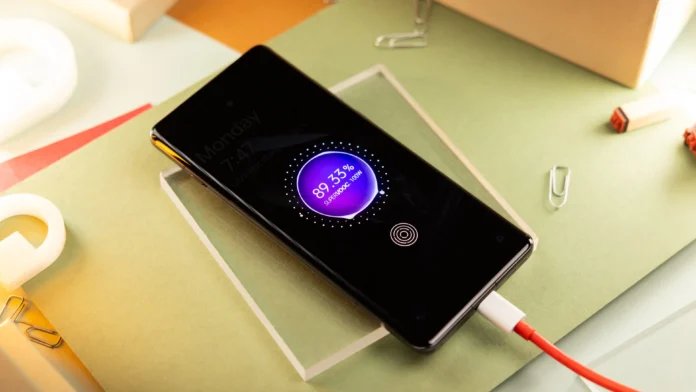Calibrating your iPhone battery can significantly enhance its performance and lifespan ensuring that your device functions smoothly. If your iPhone’s battery percentage seems inaccurate or your phone dies unexpectedly it may be time to calibrate it. In just a few simple steps you can restore your battery’s efficiency and enjoy more reliable battery readings.
Battery calibration is essential for those who experience sudden drops in battery percentage or find that their iPhone isn’t holding a charge like it used to. By following a straightforward process you can recalibrate your iPhone’s battery helping it better estimate its remaining power and ultimately improving your device’s performance.
Why is Battery Calibration Important?
Learning how to calibrate iPhone batteries in a few easy steps is very important for keeping your phone running well. When you calibrate the battery it helps your phone show the correct battery percentage. Sometimes your iPhone might say it has a lot of battery left but then it suddenly dies. This happens because the battery is not calibrated correctly. Calibrating fixes this problem so that your phone can better understand how much power is left.
By calibrating the battery you also help your iPhone’s battery last longer. Over time phone batteries lose some of their power. If your iPhone’s battery is not calibrated it might wear out faster. When you regularly calibrate the battery you can make sure that your phone works properly for a longer time. It’s a simple process but makes a big difference in your phone’s battery life.
Signs Your iPhone Battery Needs Calibration
You might wonder when to start calibrating your iPhone battery. There are some clear signs that can tell you it’s time. One of the biggest signs is when your phone’s battery percentage seems to change quickly. For example your phone might show 50% battery but after just a few minutes it drops to 10% or even turns off. This is a sign that the battery reading is wrong and it’s time for calibration.
Another sign is when your iPhone is not lasting as long on a full charge. If you used to get a full day of use from your phone but now it dies before lunch the battery might not be calibrated correctly. You can also check if your phone charges too fast or too slow which can also mean the battery needs calibration. These are simple signs that let you know it’s time to fix your battery.
Prepping Your iPhone for Calibration
Before you start learning how to calibrate iPhone batteries in a few easy steps it’s important to prepare your phone. First make sure your iPhone has enough storage space and that no apps are running in the background. You don’t want anything slowing down your phone while you are trying to calibrate the battery. You can also check if your iPhone’s software is up to date because updates often help the battery work better.
Another step to prepare is to back up your iPhone. While calibrating the battery shouldn’t delete any of your data it’s always a good idea to be safe. Use iCloud or iTunes to save your photos, contacts and apps. Once your phone is backed up you are ready to start the calibration process.
Step-by-Step Guide to Calibrating Your iPhone Battery
Now that your phone is ready, here’s how to calibrate the iPhone battery in a few easy steps. The first thing you need to do is drain the battery completely. Use your phone as you normally would until it powers off by itself. After that leave your iPhone off for at least a couple of hours to make sure the battery is completely empty.
The next step is to charge your iPhone all the way back up to 100%. It’s best to use the original charger and cable for this. Once the battery is fully charged keep your phone plugged in for about an hour. This makes sure the battery is topped off. After that restart your phone and continue to use it as normal. Your iPhone battery should now be calibrated and the percentage reading should be more accurate.
Common Mistakes to Avoid During Battery Calibration
While learning how to calibrate iPhone batteries in a few easy steps there are a few mistakes you should avoid. One common mistake is not letting your battery drain fully before starting the calibration process. If you don’t let the phone power off by itself the calibration won’t work as well. Always make sure the battery is fully empty before you begin.
Another mistake is not charging your phone all the way up to 100%. If you unplug your phone too early the battery calibration might not be accurate. It’s important to follow each step carefully to get the best results. Avoid using fast chargers or cheap cables as they can mess with the process and cause harm to your battery over time.
How Often Should You Calibrate Your iPhone Battery?
You don’t need to learn how to calibrate an iPhone battery in a few easy steps every day. In fact it’s something you should do only every few months or so. Most people recommend calibrating your battery about once every three months. This keeps your battery healthy and makes sure the percentage readings stay accurate.
If you use your phone heavily or notice any signs like sudden battery drops you might need to calibrate more often. However doing it too often can also put extra strain on your battery so it’s important to find the right balance. Regular calibration can help keep your iPhone battery lasting longer and running smoothly.
Additional Tips to Extend iPhone Battery Life
Along with learning how to calibrate iPhone battery in a few easy steps there are other things you can do to make your battery last longer. One of the easiest things is to lower the brightness on your phone screen. A bright screen uses more power so dimming it can save a lot of battery. You can also turn off Wi-Fi, Bluetooth and GPS when you’re not using them.
Another tip is to close apps that you aren’t using. Many apps run in the background and drain your battery without you even noticing. You should also avoid charging your phone too often. Let the battery go down a bit before plugging it in and try not to let it stay plugged in overnight. These small tips can make a big difference in how long your iPhone battery lasts.
What to Do if Calibration Doesn’t Improve Battery Performance?
Sometimes even after you learn how to calibrate iPhone battery in a few easy steps your phone might still have problems. If the battery is still draining fast or the percentage readings are still wrong there might be a bigger issue. One thing you can try is updating your phone’s software. Sometimes an old software version can cause battery issues.
If calibration and software updates don’t fix the problem it might be time to replace the battery. iPhone batteries wear out over time and sometimes a replacement is the best solution. You can take your phone to an Apple Store or a trusted repair shop to get a new battery. This can give your iPhone a new life and help it last much longer.
Conclusion
Learning how to calibrate iPhone battery in a few easy steps is a simple way to keep your phone working well. It helps your iPhone show the correct battery percentage and can make the battery last longer. By following these steps and avoiding common mistakes you can enjoy a better iPhone experience. If calibration doesn’t fix your battery problems don’t worry. Sometimes all you need is a software update or a new battery to get your phone back in top shape.

